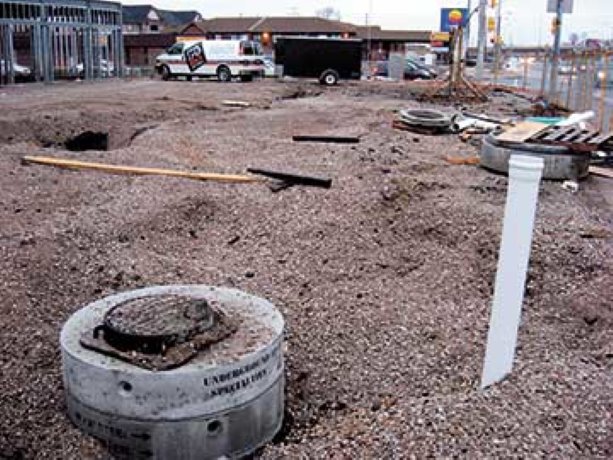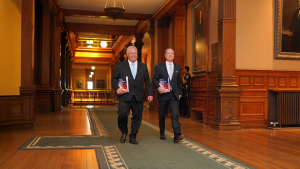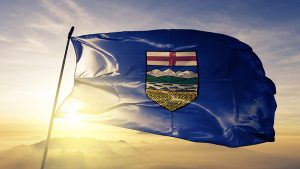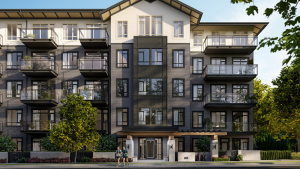Andre Abouasli knew a few things about construction before he purchased a long vacant property at a major south Windsor intersection.
But then he learned quite a bit more when it came to remediating the former brownfield site and constructing on top of it.
Abouasli and wife Hoda are proprietors of a downtown Windsor hair salon and aesthetic studio, Salon Tabeya.
But they wanted to expand and thought the high profile commercial location at the suburban corner of Dougall Avenue and West Grand Boulevard would be ideal.
The site had long been an eyesore.
It had formerly been occupied by a Shell gas station, which closed in 2003. The barren cracked asphalt and weed infested corner was best known for its jersey barriers around the perimeter.
The Abouaslis came to the rescue when many before them tried and failed to develop the 0.13 hectare site.
The biggest problem in developing it was getting financing to buy and pay for remediation and construction.
Bills are still coming in but the hair stylist and budding real estate entrepreneur — he’s planning to build a small commercial plaza there — figured the total cost could come to as much as $1.2 million.
As it had been for others before them, it was impossible for the Abouaslis to get bank money. They had to seek out family members.
The financing issue speaks to a fact of life about brownfields.
The former property owner, Shell Oil, “couldn’t sell it because of the (remaining) contaminants in it, because banks won’t touch it and whoever is going to buy it has got to be a cash buyer,” Abouasli said.
In fact, after the Environment Ministry finally signed off on remediation, a process that took several years, Shell cleaned up most of the lot in 2008. It removed 1,500 tonnes of soil or about “60 to 70” truckloads, Abouasli said.
“They did a great job to get it where it is,” he said.
But there was still a small 125-square-metre section — the northeast corner that faces the intersection — where there was slight contamination from where gasoline had seeped.
Abouasli had to agree not to build over the area so that fumes from hydrocarbons wouldn’t rise into the buildings.
Abouasli is spending upwards of $200,000 to cap the area with 0.3 metres of clay a couple of feet below surface, then topping with 0.46 metres of aggregate and finishing with a concrete surface as part of the parking lot. There will be a small section beside it that will be landscaped.
But Abouasli plans to go above and beyond simply capping the soil.
He’ll install a plastic liner between the aggregate and concrete “so if any water goes through the concrete the plastic will stop it and drive it down to the drain.”
While Abouasli had some construction knowledge, “this is the first time I did something like this and I had some help from an environmental engineer,” he said. That person was Ron Hasan of London, Ont.
Meanwhile Abouasli hired his own sub-contractors.
In the larger portion of the lot which Shell had remediated — and where most of the four to five unit plaza and parking lot will be built — Abouasli had to dig down almost five metres to the original clay to support the foundation.
“And we back filled it with I think it’s called 0.7 concrete which doesn’t have too much powder, it’s basically stone and a little bit of concrete and we levelled it up (three metres) to the level of where the foundation was going to go and then we put our foundation in,” he said.
The plaza should be complete by mid-summer. He and Hoda’s salon will take up two floors and the remaining units will be single storeys. He wants the plaza to have a “vintage” finish.
The Abouaslis did manage to finally acquire some government funding.
The City of Windsor had just approved its new brownfield remediation assistance plan. The family will save about $7,000 from a policy that exempts up to 60 per cent of development charges.
They’ll also be granted back the property tax increase from redeveloping the site, saving about $60,000 over 10 years.
There are several other city incentives in the brownfield program depending on type of property.
Windsor in 2009 identified 137 brownfield sites representing 226 hectares “potentially available for adaptive reuse and redevelopment,” according to a city report.











Recent Comments
comments for this post are closed